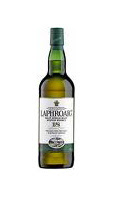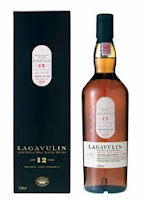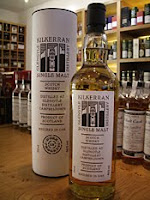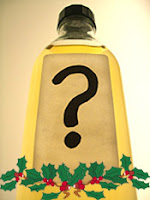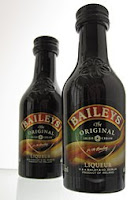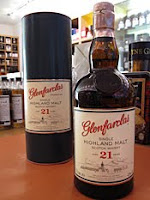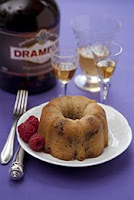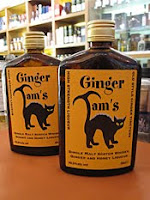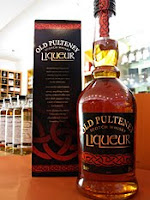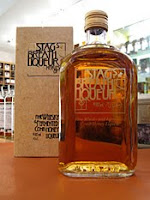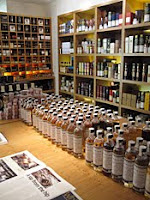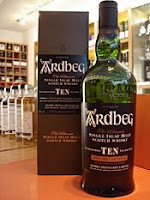 We have sampled and reviewed many whiskies over the last year at Whisky For Everyone, so we have decided to choose our top 10 of the new releases that hit the market in 2009. With so many whiskies to choose from we have called in the help of Chris Maclean - the esteemed manager of The Whisky Shop's London branch and a selected judge in the whisky category of the recent Spirits Business Magazine Awards.
We have sampled and reviewed many whiskies over the last year at Whisky For Everyone, so we have decided to choose our top 10 of the new releases that hit the market in 2009. With so many whiskies to choose from we have called in the help of Chris Maclean - the esteemed manager of The Whisky Shop's London branch and a selected judge in the whisky category of the recent Spirits Business Magazine Awards.Top 10s are always contentious issues as everyone has differing opinions. We have tried to select our Top 10 on quality, value for money and availability to the public. To this end, there are not really any single cask or independent bottlings included despite some excellent ones being sampled throughout the year. Some however are limited edition bottlings that are still available to purchase. Here is the second part containing our Top 5, including our 'Whisky of the Year'. If you missed Part 1 (containing numbers 6-10), it can be read by clicking here.
So here goes .... (drum roll please!). Our Top 5 whiskies of 2009 are ....
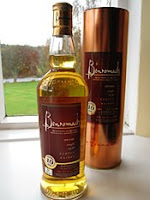 *Whisky for Everyone's Whisky of the Year 2009*
*Whisky for Everyone's Whisky of the Year 2009*1 - Benromach 10 years old
This whisky was released in the late Summer by Speyside's smallest operating distillery. This has a surprisingly rich, smoky nose. First comes vanilla and toffee aromas before giving way to an earthy peatiness. These elements combine well and there is also dried fruits (imagine sultanas) and dried grasses. On the palate, this whisky is rich, full bodied and quite creamy with initial sweet malty cereal grains and vanilla notes. Then comes that lovely smokiness again, although it is a bit more ashy and ember-like than before. The cereal, vanilla and smoke mix perfectly with some further dried fruits (add some tropical dried fruits, like mango, to the sultanas), buttery toffee and a hint of dried grassiness. This feels thick in your mouth and is smooth and very well balanced. The finish is reasonably long with the creamy vanilla and sweet smokiness prominent. This offers rich, classic Speyside characteristics but with the smoky twist. A fantastic all round dram and the great value for money that it offers, makes this our 'Whisky of the Year 2009'.
Details - Approx. price £30/ Alcoholic strength 43% ABV/ To read full post - click here
 2 - Talisker 30 years old Cask Strength
2 - Talisker 30 years old Cask StrengthThis whisky from the iconic Talisker distillery on the isle of Skye formed part of Diageo's Autumn Cask Strength limited releases. The nose is very fresh for a whisky of this age and has a complex mix of dried fruit (sultanas and candied orange peel), saltiness (imagine seaweed) and subtle spicy smokiness (think of black pepper and nutmeg). There is also toffee and a touch of earthiness. This feels thin and silky on the palate with a sumptuous vanilla sweetness combining well with delicate light smoke (imagine wood ash/embers), a salty element (brine again) and dried fruits notes (although these are less prominent than on the nose). This drinks very well at the natural strength, although adding a touch of water does bring out some sweet earthiness (reminiscent of damp moss). The finish is long with some honey and dried fruit sweetness with a whiff of smoke and spice. Wow - this is one exceptional and complex whisky.
Details - Approx. price £215/ 53.1% ABV/ only 3000 bottles/ To read full post - click here
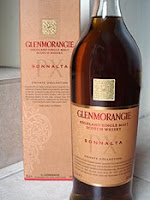 3 - Glenmorangie Sonnalta
3 - Glenmorangie Sonnalta One of the new releases this year from the famous Highland distillery of Glenmorangie, this has been part matured in Pedro Ximinez sherry casks. It was released in the Spring to the Duty Free/travel retail market and the great news is that it will be on general release in the new year. The nose is fantastic and delicate with a combination of caramel-like sweetness, dried fruits (raisins and candied orange peel), something dark (imagine high cocoa chocolate/espresso coffee), vanilla and sweet malted barley. On the palate this explodes on your tongue and is full bodied, viscous and creamy. An intense pleasant sugary burst hits the front of your tongue, dying slowly to reveal the elements from the nose - a great mixture of vanilla, caramel/ dark brown sugar, dried fruits (some apricot this time), a nuttiness (imagine coconut), bitter dark chocolate, coffee and a tropical fruit element (something like mango/papaya). The lengthy finish is intensely sweet, complex and fruity with some cinnamon spice coming through. Sonnalta is a top quality and well balanced 'try before you die' whisky. A fantastic dram.
Details - Approx. price £75/ 46% ABV/ To read full post - click here
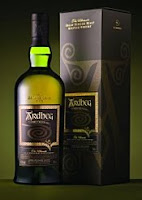 4 - Ardbeg Corryvreckan
4 - Ardbeg CorryvreckanThis whisky from the cult Ardbeg distillery on the western isle of Islay was released in September and replaced the popular Airigh Nam Beist in the core range. The nose is robust and aromatic yet inviting. There is smokiness and sweetness in abundance (think of earthy peat and sugary caramel). There is also a fresh grassy note, dried fruit (think of sultanas and candied orange peel) and a whiff of bitter iodine. On the palate, this is rich and full of character. Again, there is initial powerful smokiness and a burst of sweetness. The sweetness is more than on the nose but also has a slight bitter edge, like burnt sugar. The dried fruit note is present again and is joined by a hot spicy element (quite peppery and fiery, like a red chilli) and a salty tang. The finish is very very long and full of peaty smoke and hot, spicy heat, feeling drier than the sweeter nose and palate. When water is added, the nose and palate became sweeter (think of brown sugar) with more fresh crisp green fruit (imagine pears and apples). The finish is also sweeter and shorter but less complex and younger. Corryvreckan is a very impressive smoky whisky that will gain Ardbeg further admirers. If you love smoky whiskies, you have to try this.
Details - Approx. price £65/ 57.1% ABV/ To read full post - click here
 5 - Glendronach 18 years old
5 - Glendronach 18 years oldGlendronach was restarted in 2008 and the new owners wasted no time in expanding the profile and range of its whiskies. This whisky hit the shelves in early Summer along with a new 15 years old. It isexclusively matured in Oloroso sherry casks and is sweet and malty on the nose with a lot of that sherry cask influence - dried fruitiness (think of sultanas and peel especially), malted barley, warm spices (imagine nutmeg and cinnamon) and oaky woodiness. The palate is thinner than the richness of the nose suggests. Dried fruit and malted barley combine well to give it an almost perfect level of sweetness. Other elements present include some sugary caramel, those warm spices again and a distinct nuttiness (think of walnuts) that gives a slight bitterness to balance the other sweetness. The finish is quite short, woody, dry and slightly bitter with some candied peel coming through (orange especially). A lovely dram that gives everything that you would want from a sherry cask whisky.
Details - Approx. price £55/ 46% ABV/ To read full post - click here
To complete and re-cap the remainder of the Top 10, here is the list of numbers 6-10. These are fully featured in Part 1.
6 - Laphroaig 18 years old
7 - Hibiki 12 years old
8 - Lagavulin 12 years old Cask Strength
9 - Dalmore 18 years old
10 - Kilkerran 'Work in Progress'
So, there we have it. That is our Top 10 of the new whisky releases from 2009. However, there are others that deserve honourable mentions - Ardbeg Supernova, Caol Ila 10 years old Unpeated Cask Strength, Connemara Sherry Finish, Glenmorangie Signet, Glen Moray 8 years old Red Wine Cask, Kavalan Solist and Kilchoman 3 years old to name but a few. Let's hope that there are as many excellent releases in 2010. We would be interested to hear your nominations for the best whiskies of the year, so please add your comments at the bottom of this post.

